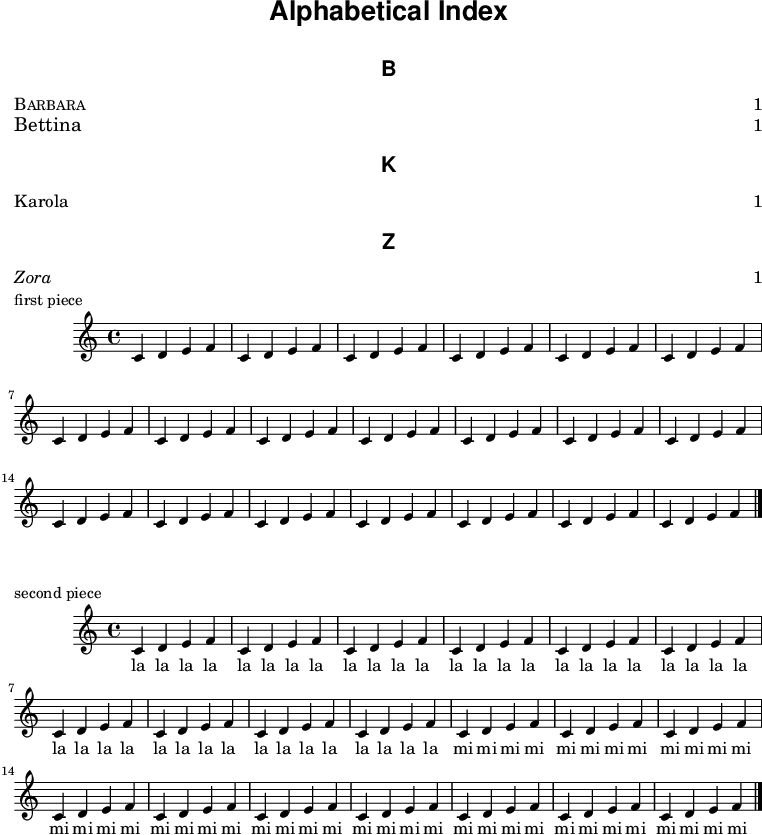Sometimes you may want to get a sorted index of the pieces contained in a book. Often the \table-of-content command does this job quite well. However, the problem with it is that it always sorts by page numbers. For books containing many songs it is common to have an index sorted by letters or topics.
Both is possible with this snippet. It takes the code of LilyPond's ly/toc-init.ly file and defines three new commands \indexItem, \indexSection, and \index. The first two are used to define index items, the last one will create the output.
\indexItem and \indexSection both take two arguments (string, markup). The first is used to calculate the order of the items in the output, the second one contains the markup that is actually printed.
\markuplist \index
\indexItem #"Berta" \markup "Berta"
\indexItem #"Clown" \markup "Clown"
\indexItem #"Adam" \markup "Adam"
By setting the first argument of \indexItem and \indexSection to a different value than the second it is possible to create heavily customized sorted indices. For example, a topic-based index can be achieved by
\markuplist \index
\indexSection #"spring" \markup \smallCaps "Songs of Spring"
\indexItem #"spring - I Like the Flowers" \markup "I Like the Flowers"
\indexItem #"spring - Der Winter ist vergangen" \markup "Der Winter ist vergangen"
\indexSection #"rock" \markup \smallCaps "Rock Songs"
\indexItem #"rock - Stairway to Heaven" \markup "Stairway to heaven"
\indexItem #"rock - Nothing Else Matters" \markup "Nothing Else Matters"
Limitations:
It is not yet possible to create multiple indices, for example, an alphabetically sorted and a topic-based one. To achieve that a few additions to the snippet would be necessary, which I had not yet time to implement.
